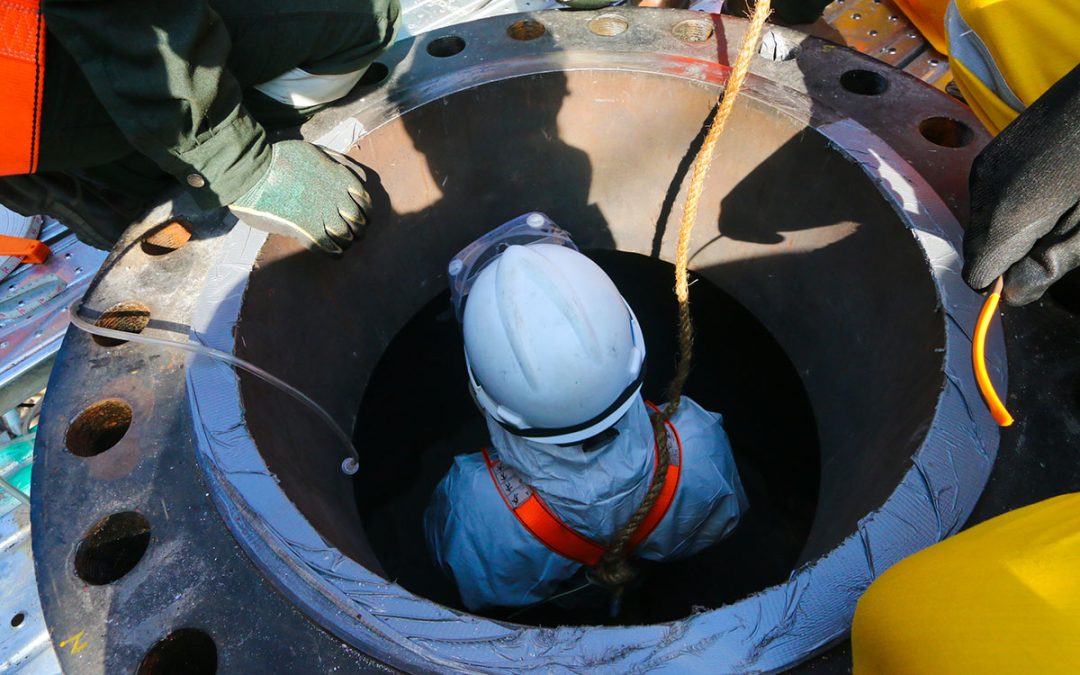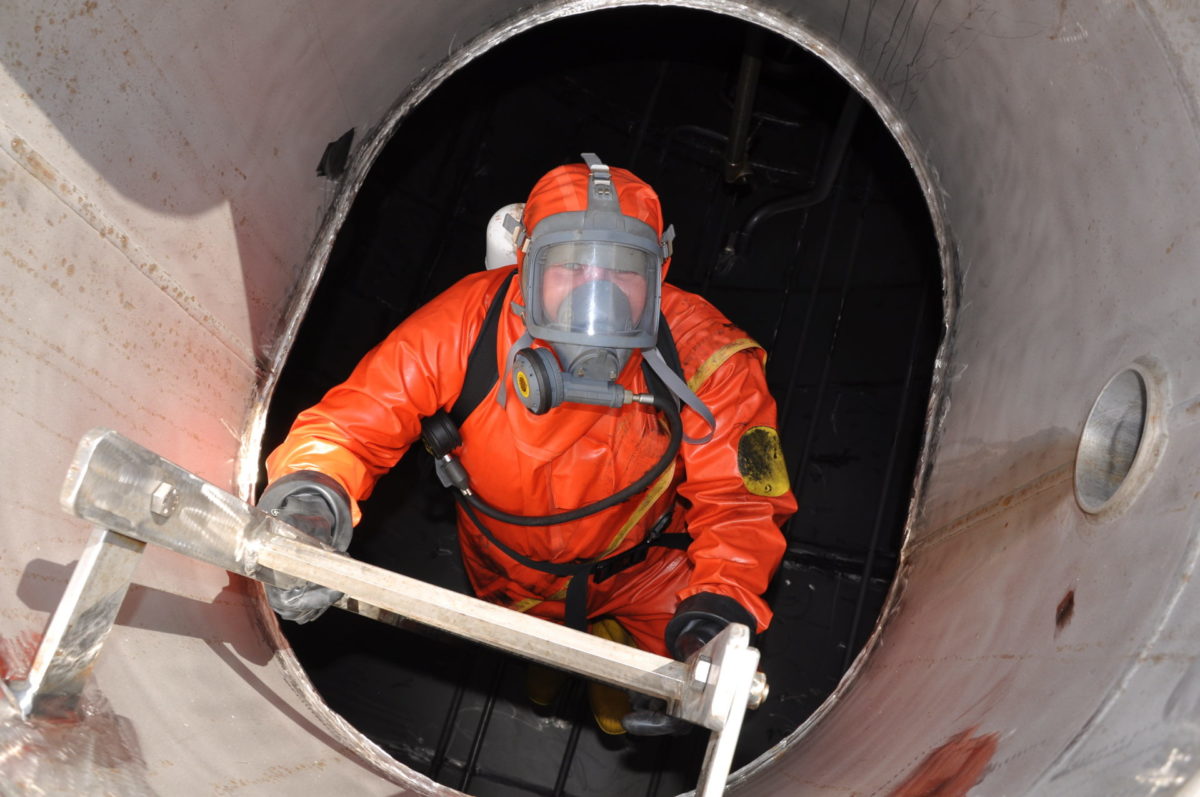Confined spaces present unique hazards that can quickly turn dangerous. These seemingly mundane areas, such as storage tanks, silos, or pipelines, can trap workers in a suffocating atmosphere, expose them to toxic fumes, or cause falls from significant heights. Fortunately, with proper planning, procedures, and safety measures, working within confined spaces can be completed safely and efficiently.
What is a Confined Space?
The Occupational Safety and Health Administration (OSHA) defines a confined space as one that meets all of the following criteria [OSHA]:
- Large enough and configured so that an employee can bodily enter and perform assigned work
- Has limited or restricted means for entry or exit
- Is not designed for continuous occupancy
While these criteria provide a general definition, confined spaces come in all shapes and sizes. Common examples include storage tanks, process vessels, pits, vaults, sewers, and ventilation ducts. They can be located above ground or below ground, indoors or outdoors. The key point is that they all share the potential for serious hazards.
Understanding the Dangers of Confined Spaces
Confined spaces pose several unique threats to worker safety. One of the most significant dangers is the potential for an atmosphere lacking sufficient oxygen. Oxygen depletion can occur due to various factors, such as the presence of rust or decaying organic matter that consumes oxygen, or processes that displace oxygen with other gases. Without enough oxygen, workers can become disoriented, lose consciousness, and even die within minutes.
Another significant hazard is exposure to toxic atmospheres. Confined spaces can contain harmful gases, vapors, or fumes from previous processes, cleaning solutions, or decaying materials. These contaminants can irritate the lungs, cause nausea and dizziness, or even be fatal depending on the concentration and exposure time.
Entrapment hazards are also a concern in confined spaces. Workers can become trapped due to cave-ins, engulfment by loose materials, or by equipment malfunctions. These situations can make it difficult or impossible for workers to escape, further increasing the risk of injury or death.
The Role of the Confined Space Attendant
One critical safety measure for working in confined spaces is the designation of a confined space attendant. This attendant, who must be trained in confined space procedures, is stationed outside the confined space while work is being performed. The attendant’s primary responsibilities include:
- Monitoring the worker inside the confined space for signs of distress
- Maintaining communication with the worker
- Ensuring the safety of the entry permit
- Summoning help in case of an emergency
The presence of a vigilant attendant provides an extra layer of safety for confined space workers. By keeping a watchful eye and maintaining clear communication, the attendant can help prevent accidents and ensure a quick response if a problem arises.
The Importance of Atmospheric Testing
Before entering a confined space, it is vital to conduct thorough atmospheric testing. This testing helps identify potential hazards like oxygen deficiency, the presence of toxic gases, and combustible atmospheres. OSHA requires employers to test the atmosphere within a confined space for specific hazards before entry and continuously monitor the atmosphere while work is being performed [OSHA].
Atmospheric testing typically involves using specialized equipment to measure oxygen levels, the concentration of specific gases, and the Lower Explosive Limit (LEL) of combustible materials. The LEL is the minimum concentration of a gas or vapor in air that can ignite if an ignition source is present. By understanding the atmospheric conditions within the confined space, workers and attendants can take appropriate precautions to mitigate risks.
Confined Space Rescue
Despite careful planning and safety measures, emergencies can still occur in confined spaces. Therefore, it is vital to have a well-rehearsed confined space rescue plan in place. This plan should outline the steps to be taken if a worker becomes injured, incapacitated, or entrapped within the confined space.
The rescue plan should designate a rescue team trained in confined space rescue procedures. This team should have the necessary equipment and resources to safely extract workers from confined spaces. Regularly practicing confined space rescue drills helps ensure the rescue team is prepared to respond effectively in an emergency.
Confined spaces can be hazardous environments, but with proper planning, procedures, and safety measures, work can be conducted safely and efficiently. By understanding the dangers, utilizing trained attendants, conducting thorough atmospheric testing, and implementing a comprehensive safety program, workers can minimize the risks associated with confined space entry. Remember, confined space safety is a shared responsibility. Employers must provide a safe work environment and ensure workers are properly trained and equipped. Workers must follow established safety procedures and use common sense when working in confined spaces. By working together, everyone can help prevent accidents and ensure the safety of all workers.





Recent Comments